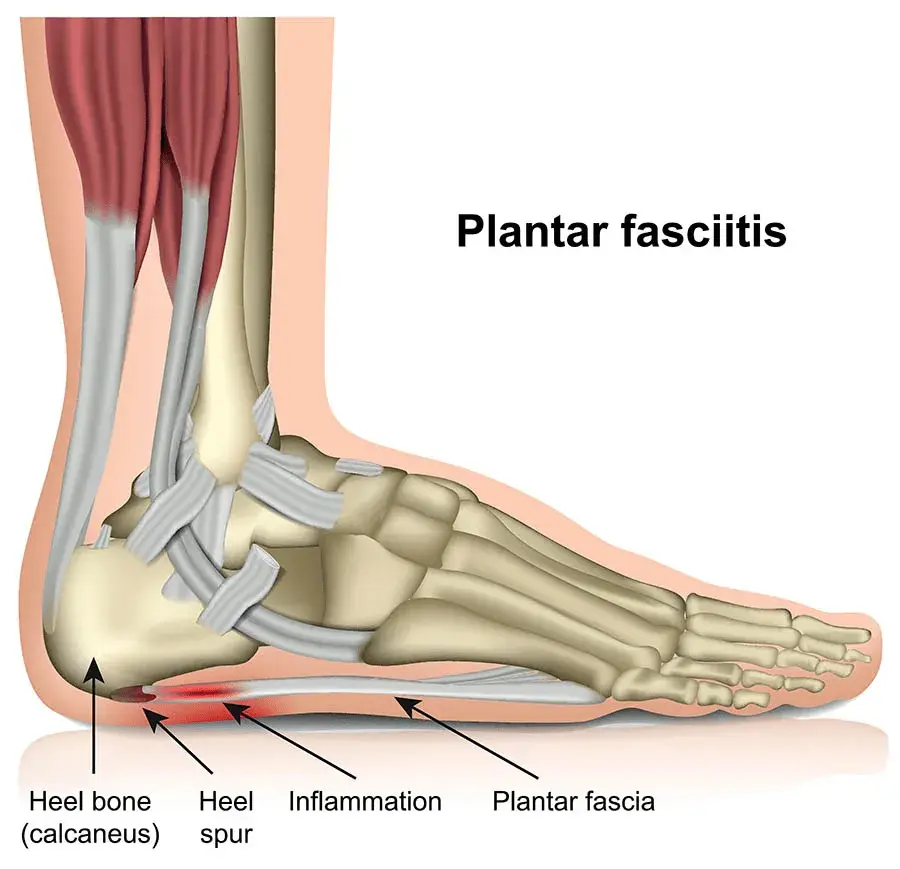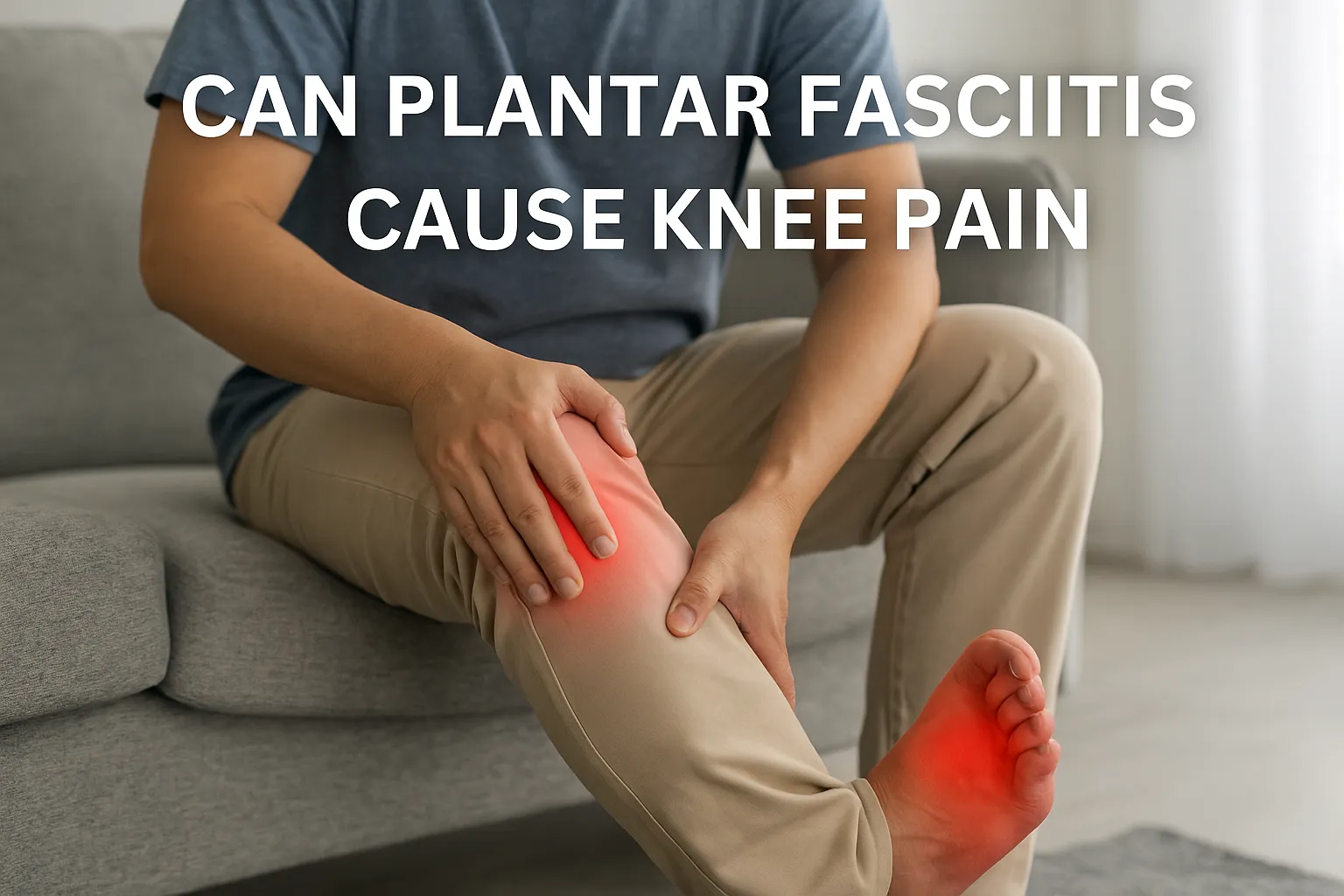When you think of foot pain, you probably don't think of something called plantar fasciitis. But it is one of the most common pains that people experience in their feet. It is also one of the most painful and difficult to deal with. If left untreated, plantar fasciitis can get so bad that it will limit your walking ability and even become impossible to ignore.
The good news is that there are things you can do to ease the pain and lessen its effect on your life. Here are some tips on how to cure plantar fasciitis in one week and get back to your regular activities without pain or discomfort.
What is plantar fasciitis?

Plantar fasciitis is a common foot injury that usually occurs in people who are middle-aged, overweight, or have high-arched feet. This common condition causes pain in the bottom of the foot near the heel. It is caused by the inflammation of the plantar fascia, a band of connective tissue that runs from your heel to your toes.
Read Also: Zerodol SP Tablet Uses, Benefits, dosage, Side Effects, concerns
What causes plantar fasciitis?
The plantar fascia is responsible for supporting the arch in your foot. This condition can be caused by overuse or incorrect footwear. As we age, our plantar fascia tendons become less elastic and, therefore, unable to handle sudden high-impact activities. This can lead to small tears in the plantar fascia, with the likelihood of this occurring being much greater if the tissue is already weakened.
The foot's shape can have a bearing on the likelihood that the foot is subject to this injury. Individuals with a high arch, or "piggy-footed" foot type, are more susceptible to injury. Some people have a genetic tendency to develop plantar fasciitis, which means they are more likely to get it.
Also Read: How to boost fertility in your 30s?
How can I recognize I have plantar fasciitis?
The symptoms of plantar fasciitis can be felt as a stabbing or burning sensation at the bottom of the heel or on the inside of the foot, sometimes extending as far as the toes. This can be particularly bad when first rising from a resting position and can be aggravated by bearing weight or walking. Symptoms may subside after a short period but may recur when increased activity levels.
The initial symptoms of plantar fasciitis can often be mistaken for a minor injury. However, if the foot condition is not treated, the symptoms can become chronic and cause long-term impairment. If left untreated, the foot condition can become so bad that it can be impossible to ignore.
Also, Read Know What kills toenail fungus instantly in 2022.
How To Cure Plantar Fasciitis in One Week?
When dealing with plantar fasciitis, it is important to remember that there is no medication for this condition, and it cannot be cured. The best treatment for this condition is to keep the tissues in the foot and heel as loose and pliable as possible through stretching and soft tissue massage. Here are some tips to cure plantar fasciitis in one week.
Exercises for plantar fasciitis
You can promote the following exercises to keep the tissue in the foot and heel loose -
- Toe stretches: By keeping the toes nice and loose, you can help keep the rest of the footloose. This can help prevent re-injury. The stretches can be done while sitting, standing, or watching TV.
- Heel stretches: You can help prevent heel spurs and plantar fasciitis re-injury by keeping the heel loose. While sitting, place the heel of one foot on the top of the opposite knee and then gently lean forward to feel a stretch in the heel. Hold the position for 30 seconds and then switch to the other foot.
- Foot massage: By keeping footloose and relaxed, you can help prevent re-injury. Foot Massage can help keep the tissue in the footloose and pliable. You can practice many foot massage techniques either by yourself or with the assistance of a partner.
- Rolled-up towels, ice, and heat therapy: Place a rolled-up towel under the painful area of the foot, and then place a warm water bottle or ice pack on the outside area. Do this for 15 minutes on each foot every day. Use an ice pack or a bag of frozen vegetables such as peas for 15 minutes daily for 3-days. Apply heat or ice pack to the foot for 20 minutes every day for 7-days. Wear a pair of supported stockings daily. Have a soft foot massage daily.
- Rolling stretch exercise: Place an exercise ball on a flat surface and place the painful foot on top of the ball. Slowly roll the foot and ankle in a circular motion while applying gentle pressure. Repeat this motion for 1 minute on each foot. Lie on a bed or couch and place your feet on a soft cushion. Gently massage the foot for 2 minutes.
- Morning stretch routine: Place your foot against a wall and push your foot towards the wall until you feel a mild stretch in the heel and arch area. Hold this position for 15 seconds and then do these two more times. Get on the floor and place your foot between 2 soft cushions or pillows. Slowly rotate your feet clockwise and then in a counter-clockwise direction. Repeat this motion for 2 minutes on each foot.
Wear a night splint
Plantar fasciitis can be relieved with night splints, which stretch your arches and calves overnight. This is most effective for patients who have experienced plantar fasciitis for at least six months. Most are designed to last one to three months and are available in hard and soft variants.
Wear compression socks
Wear compression socks that are designed to help heal the area of pain. It is used in addition to any exercise and stretch routine. They give the appropriate flexibility to the plantar fascia and foot muscles while relieving tension. For mild cases, you can wear compression socks. They have been proven to help with pain and swelling. Unlike night splints, you can wear compression socks all day.
Wear proper shoes with inserts
Avoid wearing high heels and shoes with a good amount of arch support. Try using heel and arch support inserts in your shoes. You can find these at sporting goods stores and pharmacies or even get custom-made for you. Wear shoes that are made for the type of activity that you will be doing. For example, if you are playing tennis, wear tennis shoes. If you are walking on a hard surface, wear shoes for that type.
Also, Read 7 Signs You Need Corrective Foot Surgery.
Conclusion
To avoid plantar fasciitis, take good care of your feet and ensure they are properly stretched before hitting the pavement. Plantar fasciitis is not a condition that needs to be suffered through. You can cure plantar fasciitis in one week by following stretching exercises and wearing compression socks, shoe inserts, and night splints. Following these simple tips can ease the pain and return to regular activities without any pain or discomfort.
Frequently Asked Questions
How to treat plantar fasciitis?
Treat plantar fasciitis with rest, stretching exercises, proper footwear.
How to heal plantar fasciitis?
Heal plantar fasciitis with a combination of rest, stretching, orthotic footwear.
What does plantar fasciitis feel like?
Plantar fasciitis often feels like stabbing pain or stiffness in the heel, especially upon waking or after prolonged periods of rest.
Does plantar fasciitis go away?
With proper treatment like rest, stretching, and sometimes medical interventions, plantar fasciitis can often improve and resolve over time.
How long does plantar fasciitis last?
The duration of plantar fasciitis varies, but with appropriate treatment, it often improves within a few months; however, severe cases may take longer.

Reviewed by







